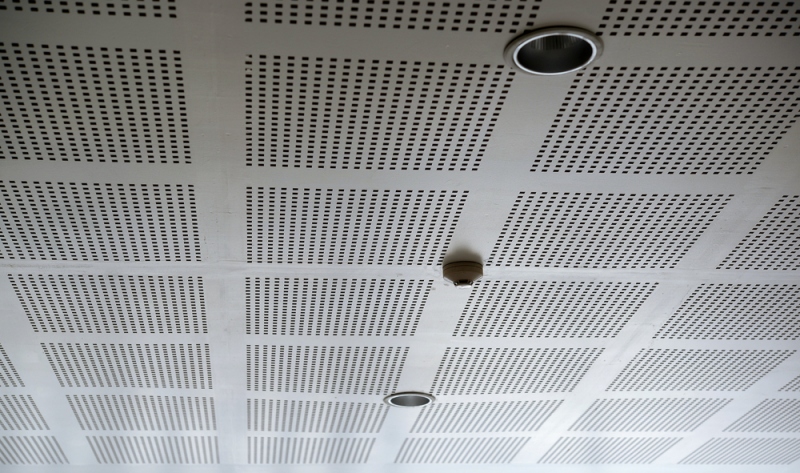Nowadays, it is usual practice to have several occupants in a room, whether in an office or home setting. Thus, there is a need for acoustical ceilings. Poor acoustics, noise, and echoes in rooms result in a highly stressful indoor environment. Echoes and sound can be solved by using acoustic ceilings. They also improve the appearance of ceilings with their attractive designs like those offered by Fadeceilings . They also ensure that these rooms are free from moisture which are important in keeping equipment, luggage, and other things dry. Incidentally, there are luggage storage service providers like Luggagehero who continuously provide services ensuring the safety of your baggage.
An acoustic foam is a sound absorbing foam made from A class melamine. Acoustic foams can be used for ceiling panels, ceiling tiles, and bass trap. Specific selections such as fade ceilings offer flexibility and seamlessness.
Below are the 5 best selections for acoustical ceilings.
-
Stratford Ceiling System
You can get great aesthetics and a good performance from Stratford acoustical ceiling. It is classic and has a variety of finishing alternatives. It offers flexibility and a variety of design options. The Stratford ceiling system is lightweight and easy to install.
The system has a 50% noise reduction coefficient. It means the half of the sound which hits the ceiling gets absorbed instead of bouncing back.
It is therefore ideal for use in theaters, restaurants, or in areas where privacy is vital.
-
Thermoformed Ceiling
A thermoformed ceiling is a suitable option for the hospital and recreation places. It is decorative and attractive. This selection is a merge between traditional elements and functional elements.
These ceilings are affordable and stylish. For example; Noir Lounge in San Francisco has a thermoformed dome. The roof is made of translucent material creating a gentle glow, avoiding glares. It also creates an appropriate pattern for the mood.
-
Fade Ceiling System
This selection offers a stylish modern ceiling with invisible joints. Fade ceilings absorb sound waves, while its plaster system makes conversations clearer by reducing reverberation.
Fade ceilings are ideal for use in residential, retail, and commercial spaces. Its installation is fast and easy. It does not contain synthetic material and is easy to clean.
-
Acoustic Ceiling Panels That Combat Reverberation
Smith United Methodist parishioners wanted to make better use of their hall. However, they encountered problems with the vibrations (3.5 per second) inside.
They needed a solution and came up with Sound Seals Acoustical ceiling panels. The ceiling reduced reverberation to 1.5 per second. This ceiling is the perfect solution for a large church.
Wooden acoustical panels are also ideal for churches. It provides a high noise reduction coefficient of 0.90. Trinity Lutheran Church in Owatonna uses it.
-
Undulating Ceilings
This ceiling system is the only acoustic panel which is useful for creating curved ceilings with no fabrication. An example of an institution with this ceiling is the New Southwest Airlines command center. The center is the cornerstone of all the airline’s operations.
It is an appropriate solution for facilities which support intense work around-the-clock. For such institutions, acoustic performance is critical during designing. Undulating ceilings are ideal since they offer high light reflectance and supports ambient lighting.
Many homeowners share their experiences of living in a house which sounds empty. Such circumstances are ordinary with concrete ceilings. Acoustic ceilings are highly sound absorbent. Therefore, they minimize echoes and improve sound quality. Feel free to choose any acoustic ceiling solution from our five recommendations above.






Leave a Reply